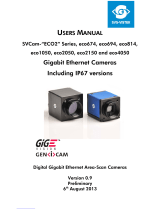
Manual EXO Series 5.31.2017
Company Information
SVS-VISTEK GMBH
Mühlbachstr. 20
82229 Seefeld
Germany
Tel.: +49 (0) 81 52 9985-0
Fax: +49 (0) 81 52 9985-79
Mail: info@svs-vistek.com
Web: http://www.svs-vistek.com
This Operation Manual is based on the following standards:
DIN EN 62079
DIN EN ISO 12100
ISO Guide 37
DIN ISO 3864-2
DIN ISO 3864-4
This Operation Manual contains important instructions for safe and
efficient handling of SVCam Cameras (hereinafter referred to as
„camera“). This Operating Manual is part of the camera and must be
kept accessible in the immediate vicinity of the camera for any person
working on or with this camera.
Read carefully and make sure you understand this Operation Manual
prior to starting any work with this camera. The basic prerequisite for safe
work is compliant with all specified safety and handling instructions.
Accident prevention guidelines and general safety regulations shoud be
applied.
Illustrations in this Operation Manual are provided for basic
understanding and can vary from the actual model of this camera. No
claims can be derived from the illustrations in this Operation Manual.
The camera in your possession has been produced with great care and
has been thoroughly tested. Nonetheless, should you have reasons for
complaint, then please contact your local SVS-VISTEK distributor. You will
find a list of distributors in your area under: http://www.svs-
vistek.com/company/distributors/distributors.php
Copyright Protection Statement
(as per DIN ISO 16016:2002-5)
Forwarding and duplicating of this document, as well as using or
revealing its contents are prohibited without written approval. All rights
reserved with regard to patent claims or submission of design or utility
patent.

Contents
iii
Contents
1
Safety Messages ...................................................... 6
2
Legal Information ..................................................... 7
3
The EXO ................................................................. 8
3.1
Building blocks simplify design-in................................ 8
3.1.1 Exclusive body architecture ............................................ 8
3.1.2 Form follows requirements ............................................. 8
3.2
GigE-Vision features ................................................. 8
3.3
Tracer adds dynamic lens control ............................... 9
3.3.1 Tracer with Micro Four Thirds mount .............................. 9
3.3.2 Liquid Lens Option with C-Mount ................................... 9
3.4
4IO adds Light and Functionality .............................. 11
4
Getting Started ...................................................... 12
4.1
Contents of Camera Set .......................................... 12
4.2
Power supply ......................................................... 12
4.3
Flashing LED Codes ............................................... 12
4.4
Software ............................................................... 13
4.4.1 SVCapture 2.x ............................................................ 13
4.5
Firmware .............................................................. 20
4.5.1 Firmware Update GigE ................................................ 20
4.6
GigE IP Setup ........................................................ 20
4.7
Driver Circuit Schematics ........................................ 22
5
Connectors ........................................................... 23
5.1
GigE Vision ........................................................... 23
5.1.1 Network (TCP/IP) ........................................................ 23
5.1.2 XML Files ................................................................... 26
5.2
Input / output connectors ........................................ 27
6
Dimensions ........................................................... 28
6.1
exo174*GE, exo183*GE, exo249*GE ...................... 28
6.2
exo250*GE, exo264*GE, exo265*GE ...................... 33
6.3
exo267*GE, exo304*GE ........................................ 37
6.4
exo4000*GE ........................................................ 40
6.5
exo5000*GE ........................................................ 44
6.6
exo304*GETR ....................................................... 48

Contents
iv
6.7
C & CS Mount ...................................................... 51
7
Feature-Set ........................................................... 52
7.1
Basic Understanding............................................... 52
7.1.1 Basic Understanding of CMOS Technology ................... 52
7.1.2 Global shutter ............................................................ 55
7.1.3 Rolling Shutter ............................................................ 56
7.1.4 Frames per Second ..................................................... 59
7.1.5 Acquisition and Processing Time .................................. 59
7.1.6 Exposure .................................................................... 60
7.1.7 Auto Luminance .......................................................... 60
7.1.8 Bit-Depth ................................................................... 61
7.1.9 Color ......................................................................... 63
7.1.10 Resolution – active & effective ...................................... 64
7.1.11 Offset ........................................................................ 65
7.1.12 Gain .......................................................................... 66
7.1.13 Image Flip .................................................................. 67
7.1.14 Binning ...................................................................... 68
7.1.15 Decimation ................................................................ 69
7.1.16 Burst Mode ................................................................ 69
7.2
Camera Features ................................................... 71
7.2.1 Tap Reconstruction on USB3 Vision .............................. 71
7.2.2 System Clock Frequency .............................................. 71
7.2.3 Temperature Sensor .................................................... 71
7.2.4 Basic Capture Modes .................................................. 72
7.2.5 LookUp Table ............................................................. 75
7.2.6 ROI / AOI .................................................................. 77
7.3
I/O Features ......................................................... 77
7.3.1 Assigning I/O Lines – IOMUX ...................................... 77
7.3.2 Strobe Control ............................................................ 84
7.3.3 Sequencer .................................................................. 91
7.3.4 PWM ......................................................................... 93
7.3.5 Optical Input .............................................................. 94
7.3.6 PLC/Logical Operation on Inputs ................................. 96
7.3.7 Serial data interfaces ................................................... 97
7.3.8 Trigger-Edge Sensitivity .............................................. 100
7.3.9 Debouncing Trigger Signals ....................................... 100
7.3.10 Prescale ................................................................... 102
7.4
IR Cut Filter ......................................................... 103
8
Specifications ...................................................... 105
8.1
EXO174*GE ....................................................... 106
1.1
EXO183*GE ....................................................... 109
8.2
EXO249*GE ....................................................... 112
8.3
EXO250*GE ....................................................... 115
8.4
EXO264*GE ....................................................... 118
8.5
EXO265*GE ....................................................... 121
8.6
EXO267*GE ....................................................... 124
8.7
EXO304*GE ....................................................... 127

Contents
v
8.8
EXO304*GETR .................................................... 129
8.9
EXO4000*GE ..................................................... 133
8.10
EXO5000*GE .................................................. 136
9
Terms of warranty ................................................ 139
10
Troubleshooting ................................................ 141
10.1
FAQ ............................................................... 141
10.2
Support Request Form / Check List ...................... 142
11
IP protection classes .......................................... 144
12
Glossary of Terms ............................................. 145
13
Index of figures ................................................. 148
14
Index ............................................................... 151

SVS-VISTEK–
Building
blocks simplify design-in 6
1 Safety Messages
The classification of hazards is made pursuant to ISO 3864-2 and ANSI
Y535.6 with the help of key words.
This Operating Manual uses the following Safety Messages:
Risk of death or serious injury
DANGER!
Danger indicates a hazard with a high level of risk which, if not
avoided will result in death or serious injury.
WARNING!
Warning indicates a hazard with a medium level of risk which, if
not avoided will result in death or serious injury.
CAUTION!
Caution indicates a hazard with a low level of risk which, if not
avoided will result in death or serious injury.
Risk of damage
PROHIBITION!
A black graphical symbol inside a red circular band with a red
diagonal bar defines a safety sign that indicates that an action
shall not be taken or shall be stopped.
CAUTION!
A black graphical symbol inside a yellow triangle defines a
safety sign that indicates a hazard.
MANDATORY ACTION!
A white graphical symbol inside a blue circle defines a safety
sign that indicates that an action shall be taken to avoid a
hazard.
Cross-reference
NOTICE
Provides references and tips
FIGURE 1: TABLE OF SAFETY MESSAGES

SVS-VISTEK–Legal Information
Building
blocks simplify design-in 7
2 Legal Information
Information given within the manual accurate as to: May 31, 2017,
errors and omissions excepted.
These products are designed for industrial applications only. Cameras
from SVS-Vistek are not designed for life support systems where
malfunction of the products might result in any risk of personal harm or
injury. Customers, integrators and end users of SVS-Vistek products might
sell these products and agree to do so at their own risk, as SVS-Vistek will
not take any liability for any damage from improper use or sale.
Europe
This camera is CE tested, rules of EN 55022:2010+AC2011 and
EN61000-6-2:2005 apply.
All SVS-VISTEK cameras comply with the recommendation of the
European Union concerning RoHS Rules
USA and Canada
This device complies with part 15 of the FCC Rules. Operation is subject
to the following conditions: (1) This device may not cause harmful
interference, and (2) this device must accept any interference received,
including interference that may cause undesired operation.
Note: This equipment has been tested and found to comply with the limits
for a Class A digital device, pursuant to part 15 of the FCC Rules. These
limits are designed to provide reasonable protection against harmful
interference when the equipment is operated in a commercial
environment. This equipment generates, uses, and can radiate radio
frequency energy and, if not installed and used in accordance with the
instruction manual, may cause harmful interference to radio
communications. Operation of this equipment in a residential area is
likely to cause harmful interference in which case the user will be required
to correct the interference at its own expense.
It is necessary to use a shielded power supply cable. You can then use the
“shield contact” on the connector which has GND contact to the camera
housing. This is essential for any use. If not done and camera is destroyed
due to Radio Magnetic Interference (RMI) WARRANTY
is void
!
•
Power:
US/UK and European line adapter can be
delivered. Otherwise use filtered and stabilized DC power
supply.
• Shock & Vibration Resistance
is tested: For detailed
Specifications refer to Specification
.

SVS-VISTEK–The EXO
Building
blocks simplify design-in 8
3 The EXO
The EXO series features a perfect match with its sophisticated, rugged
unibody housing and rich camera feature set, combined with industry
standard interfaces such as GigE Vision, Camera Link and USB3 Vision. A
smart solution for virtually any application, allowing smooth and effortless
up- or downscaling of machine vision applications. The EXO is easy to
integrate and comes with a full package of useful hardware features.
The EXO series features a perfect match with its sophisticated, rugged
unibody housing and rich camera feature set, combined with industry
standard interfaces such as GigE Vision, Camera Link and USB3 Vision. A
smart solution for virtually any application, allowing smooth and effortless
up- or downscaling of machine vision applications. The EXO is easy to
integrate and comes with a full package of useful hardware features.
3.1 Building blocks simplify design-in
3.1.1 Exclusive body architecture
The EXO-Series comes in a new 50 x 50 mm aluminum body. The
elaborate, high precision machined unibody housing ensures perfect
temperature distribution even for the most demanding sensors. The
electric circuitry of the EXO is optimized for low power dissipation, helped
by the excellent temperature performance of the housing. The EXO
features the latest global shutter CMOS and CCD sensors from SONY,
CMOSIS and ON Semi.
3.1.2 Form follows requirements
A uniform form factor and identical standard interface connectors with
identical pinout facilitate interchangeability, allowing system integrators to
adapt applications with varying conditions and requirements very quickly
with minimum design effort. The massive lens mount is designed to keep
any kind of lens in its proper position.
3.2 GigE-Vision features
GigE Vision is an industrial interface standard for video transmission and
device control over Ethernet networks. It provides numerous software and
hardware advantages for machine vision. Being an industry standard, it
facilitates easy and quick interchangeability between units, shortening
design cycles and reducing development costs.
> Cost effective
> Wide range of „off the shelf“ industrial-standard plugs and cables
> High bandwidth data transfer rate (120 MB/sec per output)
> Up to 100 m range without additional switch
> Wide range of applications in image processing
> Remote service capability
> GenICam compliant
> SDK for Windows XP/10 (32/64 bit) and Linux

SVS-VISTEK
The EXO 9
3.3 Tracer adds dynamic lens control
The increasing usage of machine vision in various branches such as
agriculture or packaging and tracking puts new challenges to the
manufacturers of machine vision applications. Very often varying
distances and difficult light conditions make integrating machine vision
into a workflow a hard job. SVS-Vistek pioneered the integration of
variable focus lenses into machine vision.
This chapter applies to the Tracer models (with “TR” in its type name like
the EXO304MGETR)
3.3.1 Tracer with Micro Four Thirds mount
The Tracer accepts this new challenge with a full blown dynamic lens
functionality. Equipped with the well known MFT (Micro Four Thirds)
bayonet, the Tracer supports
> Adjustable focus
> Adjustable zoom
> Adjustable aperture
With this featureset, the Tracer is able to focus extremely fast on various
distances and can do closeups without loss of resolution. With zoom
being relatively slow, aperture and focus adjustment in most cases is done
within 10-20ms (depends on the lens, though).
All of theses functions can be accessed in the application by the camera
programming interface or via GenICam properties. This makes
integration of dynamic lens control into third party software possible with
no effort. Power supply and data control for the lens are done through the
MFT bayonet, so no external cables are visible.
The MFT lenses are optically optimized for sensors up to 1.3”, perfectly
suited for machine vision sensors. The optical construction defined by the
MicroFourThirds consortium, telecentric on the sensor side, provides
smooth images and very low shading. Mechanically built on magnetic
rails in most cases, the stability and repeatability of the lenses is
surprisingly high. A wide selection of suitable lenses for any application is
available. As a surplus, MFT lenses provide excellent optical performance
regarding their price tag.
Due to the size of MFT Bayonet, the Tracer camera size has to be a bit
larger than normal SVS-Vistek cameras do, as the bayonet would not fit
into the std camera housing dimensions. Inside the camera case you’ll
find exactly the same electronics power pack with all of its features and
latest high performance sensors.
Please note, there are versions with CANON EF support and version with
liquid lens support as well, but with limited functionality (e.g. only focus
with liquid lens). These are available on request for some selected Tracer
camera models.
3.3.2 Liquid Lens Option with C-Mount
The Tracer with liquid lens support does variable focus only, zoom and
aperture control are not supported by the liquid lens. You need a special
serial cable with Hirose connector to connect the lens to the camera,
please ask your dealer. Being extremely fast and robust, the liquid lens is
best choice as long variable focus is sufficient in the application and you
do not need a full lens control with aperture control and zoom
functionality.

SVS-VISTEK
The EXO 10
Liquid lenses do have some advantages and disadvantages compared to
glass optics:
+
Extremely robust to mechanical shock (best choice for fast
moving robotics)
+
Fast focus (significantly faster than 10ms under common
conditions)
–
Limited resolution
–
High chromatic aberration
–
Spherical aberration might depend on gravitational acceleration

SVS-VISTEK
The EXO 11
3.4 4IO adds Light and Functionality
Your SVS-Vistek camera is equipped with the innovative 4IO-interface
allowing full light control, replacing external strobe controllers. Each of
the outputs can be individually configured and managed using pulse-
width modulation. With its high current output, the camera is able to drive
LED lights directly without external light controller.
If you attach any light to the camera, make sure the power supply has
enough power not to fail when the camera is putting light ON.
The integrated sequencer allows multiple exposures with settings to be
programmed, creating new and cost effective options. Logical functions
like AND / OR are supported.
> Up to 4 x open drain high power OUT
> Up to 4 x high voltage IN – TTL up to 25 Volts
> Power MOSFET transistors
> PWM strobe control
> Sequencer for various configurations
> PLC fuctionality with AND, OR and timers
> Safe Trigger (debouncer, prescaler, high low trigger)
Figure 2: Illustration of 4IO concept of switching LEDs (depending on
camera model up to 4 inputs/outputs, see specs)

SVS-VISTEK–Getting Started
Contents
of Camera Set 12
4 Getting Started
4.1 Contents of Camera Set
> Camera
> Power supply (if ordered/option)
> DVD
> 3D CAD files
> Manuals
> Software: GigE-Kit (Win 32/64 & Linux)
4.2 Power supply
Connect the power supply.
CAUTION! – This camera does not support hotplugging
1. First, connect the data cable.
2.
Then
connect power supply.
When using your own power supply (e.g. 10 -25 V DC) see also Hirose
12-pin for a detailed pin layout of the power connector. For power input
specifications refer to specifications.
4.3 Flashing LED Codes
On power up, the camera will indicate its current status with a flashing
LED on its back. The LED will change color and rhythm.
The meaning of the blinking codes translates as follows:
Table 1 table of flashing LED codes
Flashing
Description
Yellow slow (1Hz)
No Connection
Yellow quickly ( 8 Hz )
Assignment of Network
address
Yellow permanent
Network address assigned
Green permanent
Connected with
application
Green slow (1Hz)
Streaming channel
available
Green quickly ( 8 Hz)
Acquisition enabled
Red slow ( 1 Hz )
Problem with initialization
Red quickly ( 8 Hz)
Camera overheating
Blue permanent
Waiting for trigger
Cyan permanent
Exposure active
Violet permanent
Readout/FVAL

SVS-VISTEK
Getting Started 13
4.4 Software
Further information, documentations, release notes, latest software and
application manuals can be downloaded in the download area on:
https://www.svs-vistek.com/en/login/svs-loginarea-login.php
Depending on the type of camera you bought, several software packages
apply.
4.4.1 SVCapture 2.x
Your SVCam combined software installer including:
> SVCapture 2.x
(a viewer/controler program for SVCam USB3 cameras)
> PC USB3 driver & filter driver
> TL_Driver
(GenICam drivers and transport layer DDLs)
SVCapture 2.x is a XML based software tool provided for free. It is created
to show the capabilities of your SVS-Vistek camera and to show/modify
values to your cam.
Get control of exposure timing, trigger delay, image correction etc. or
control up to 4 LED lights connected to the SVCam directly via the PC.
Use the built-in sequencer to program several intervals executed by one
single trigger impulse.
Figure 3: Screenshot of SVCapture 2.x

SVS-VISTEK
Getting Started 14
Software Setup
Installation prosecco may differ from PC to PC. It is recommended to
install the whole software package.
1. Copy/expand the installation executable file to your hard drive.
2. Run installation
3. Read and accept the terms of license agreement
4. Choose destination folder

SVS-VISTEK
Getting Started 15
5. Install the USB 3.0 Driver
Generic driver included in the windows system will not
match all SVS-VISTEK USB3 Vision features.
6. Start installation
7. System, warning
The installer will modify your system (USB 3.0 driver);
there for windows systems will warn you with an
interrupt.
Accept system modification

SVS-VISTEK
Getting Started 17
Initialization
FIRST LAUNCH
The software is XML based. So in case there is no Camera connected to
the USB slot, no XML camera properties can be loaded, no values to
control are available.
The screen will be empty.
Connect the camera to your USB 3.0 slot.
Hardware installation will pop up.
Discover the camera with SVCapture 2.x by clicking “discover”.
Connected cameras will be listed.
Choose your camera.

SVS-VISTEK
Getting Started 19
USB 3.0 driver
The USB 3.0 driver
You can find the USB 3.0 driver within your hardware manager:
Firmware update
From time to time make sure your camera is running up to date firmware.
A firmware update tool is integrated in the software.
Internet connection needed.
In case there is no connection contact your local support:

SVS-VISTEK
Getting Started 20
4.5 Firmware
Some features may not have been implemented in older
versions. For updating your camera firmware to the most
recent version, you need the firmware tool and a firmware file
(download it from website, login area) matching your camera
model.
4.5.1 Firmware Update GigE
A separate tool called “Firmware Update Tool.exe” is
provided in the login area of the SVS-Vistek website.
Execute firmware update
> Download the firmware tool and the firmware file from
the SVS-Vistek website.
> Unpack everything into any folder, e.g. “C:\temp”
> Ensure proper network configuration
> Run the GigE update tool
Your camera should appear, choose camera by entering
camera index,
e.g. 1 and press
ENTER.
Figure 4:
searching the
camera to be
updated
Wail until
firmware update
has been
finished
Figure 5: firmware
update has just
been executed
4.6 GigE IP
Setup
Your GigEVision
camera needs a
working network connection. Make sure the camera is attached to the
network and is powered on. Make sure everything is plugged in properly
and that the firewall settings are not blocking the connection to the
camera or SVCapture.
Page is loading ...
Page is loading ...
Page is loading ...
Page is loading ...
Page is loading ...
Page is loading ...
Page is loading ...
Page is loading ...
Page is loading ...
Page is loading ...
Page is loading ...
Page is loading ...
Page is loading ...
Page is loading ...
Page is loading ...
Page is loading ...
Page is loading ...
Page is loading ...
Page is loading ...
Page is loading ...
Page is loading ...
Page is loading ...
Page is loading ...
Page is loading ...
Page is loading ...
Page is loading ...
Page is loading ...
Page is loading ...
Page is loading ...
Page is loading ...
Page is loading ...
Page is loading ...
Page is loading ...
Page is loading ...
Page is loading ...
Page is loading ...
Page is loading ...
Page is loading ...
Page is loading ...
Page is loading ...
Page is loading ...
Page is loading ...
Page is loading ...
Page is loading ...
Page is loading ...
Page is loading ...
Page is loading ...
Page is loading ...
Page is loading ...
Page is loading ...
Page is loading ...
Page is loading ...
Page is loading ...
Page is loading ...
Page is loading ...
Page is loading ...
Page is loading ...
Page is loading ...
Page is loading ...
Page is loading ...
Page is loading ...
Page is loading ...
Page is loading ...
Page is loading ...
Page is loading ...
Page is loading ...
Page is loading ...
Page is loading ...
Page is loading ...
Page is loading ...
Page is loading ...
Page is loading ...
Page is loading ...
Page is loading ...
Page is loading ...
Page is loading ...
Page is loading ...
Page is loading ...
Page is loading ...
Page is loading ...
Page is loading ...
Page is loading ...
Page is loading ...
Page is loading ...
Page is loading ...
Page is loading ...
Page is loading ...
Page is loading ...
Page is loading ...
Page is loading ...
Page is loading ...
Page is loading ...
Page is loading ...
Page is loading ...
Page is loading ...
Page is loading ...
Page is loading ...
Page is loading ...
Page is loading ...
Page is loading ...
Page is loading ...
Page is loading ...
Page is loading ...
Page is loading ...
Page is loading ...
Page is loading ...
Page is loading ...
Page is loading ...
Page is loading ...
Page is loading ...
Page is loading ...
Page is loading ...
Page is loading ...
Page is loading ...
Page is loading ...
Page is loading ...
Page is loading ...
Page is loading ...
Page is loading ...
Page is loading ...
Page is loading ...
Page is loading ...
Page is loading ...
Page is loading ...
Page is loading ...
Page is loading ...
Page is loading ...
Page is loading ...
Page is loading ...
Page is loading ...
Page is loading ...
Page is loading ...
Page is loading ...
Page is loading ...
-
 1
1
-
 2
2
-
 3
3
-
 4
4
-
 5
5
-
 6
6
-
 7
7
-
 8
8
-
 9
9
-
 10
10
-
 11
11
-
 12
12
-
 13
13
-
 14
14
-
 15
15
-
 16
16
-
 17
17
-
 18
18
-
 19
19
-
 20
20
-
 21
21
-
 22
22
-
 23
23
-
 24
24
-
 25
25
-
 26
26
-
 27
27
-
 28
28
-
 29
29
-
 30
30
-
 31
31
-
 32
32
-
 33
33
-
 34
34
-
 35
35
-
 36
36
-
 37
37
-
 38
38
-
 39
39
-
 40
40
-
 41
41
-
 42
42
-
 43
43
-
 44
44
-
 45
45
-
 46
46
-
 47
47
-
 48
48
-
 49
49
-
 50
50
-
 51
51
-
 52
52
-
 53
53
-
 54
54
-
 55
55
-
 56
56
-
 57
57
-
 58
58
-
 59
59
-
 60
60
-
 61
61
-
 62
62
-
 63
63
-
 64
64
-
 65
65
-
 66
66
-
 67
67
-
 68
68
-
 69
69
-
 70
70
-
 71
71
-
 72
72
-
 73
73
-
 74
74
-
 75
75
-
 76
76
-
 77
77
-
 78
78
-
 79
79
-
 80
80
-
 81
81
-
 82
82
-
 83
83
-
 84
84
-
 85
85
-
 86
86
-
 87
87
-
 88
88
-
 89
89
-
 90
90
-
 91
91
-
 92
92
-
 93
93
-
 94
94
-
 95
95
-
 96
96
-
 97
97
-
 98
98
-
 99
99
-
 100
100
-
 101
101
-
 102
102
-
 103
103
-
 104
104
-
 105
105
-
 106
106
-
 107
107
-
 108
108
-
 109
109
-
 110
110
-
 111
111
-
 112
112
-
 113
113
-
 114
114
-
 115
115
-
 116
116
-
 117
117
-
 118
118
-
 119
119
-
 120
120
-
 121
121
-
 122
122
-
 123
123
-
 124
124
-
 125
125
-
 126
126
-
 127
127
-
 128
128
-
 129
129
-
 130
130
-
 131
131
-
 132
132
-
 133
133
-
 134
134
-
 135
135
-
 136
136
-
 137
137
-
 138
138
-
 139
139
-
 140
140
-
 141
141
-
 142
142
-
 143
143
-
 144
144
-
 145
145
-
 146
146
-
 147
147
-
 148
148
-
 149
149
-
 150
150
-
 151
151
-
 152
152
-
 153
153
-
 154
154
SVS-Vistek exo304TR User manual
- Type
- User manual
Ask a question and I''ll find the answer in the document
Finding information in a document is now easier with AI
Other documents
-
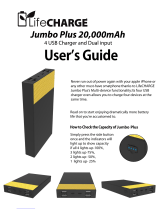 lifeCharge JUMBO PLUS User manual
lifeCharge JUMBO PLUS User manual
-
Datalogic M565 Owner's manual
-
Sony IMX327LQR User manual
-
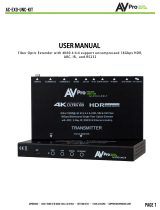 AVPro Edge AC-EXO-UNC-KIT* Owner's manual
AVPro Edge AC-EXO-UNC-KIT* Owner's manual
-
AOI UH-EM1III User guide
-
AOI UH-OM1 User guide
-
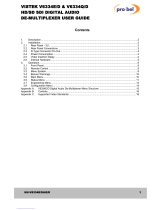 pro bel VISTEK V6334E/D User manual
pro bel VISTEK V6334E/D User manual
-
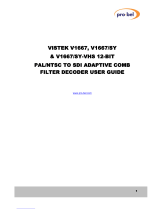 pro bel VISTEK V1667 User manual
pro bel VISTEK V1667 User manual
-
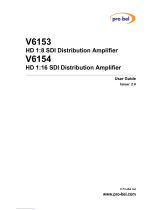 pro bel V6154 User manual
pro bel V6154 User manual
-
Envision Peripherals NV3128 User manual





























































































































































